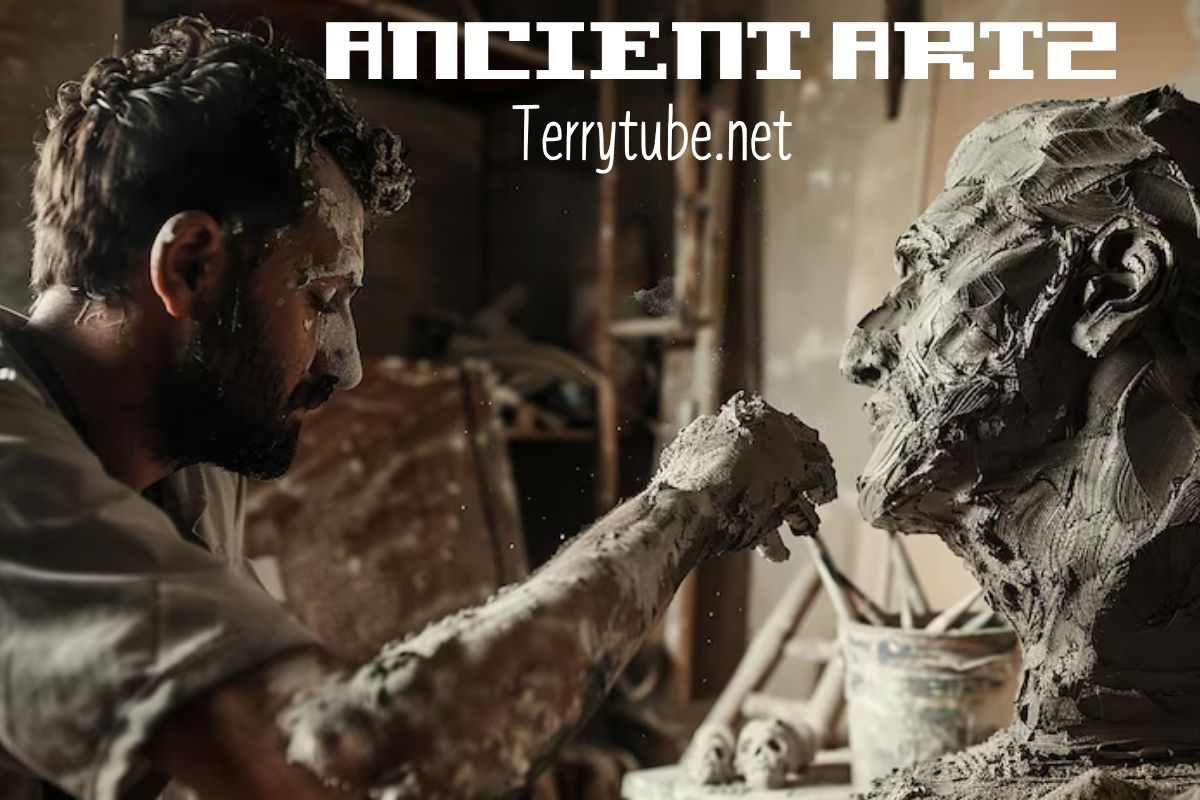News
Shari Ann Chinnis: A Pillar of Leadership and Service in Indianapolis

In Indianapolis, a city rich with culture, innovation, and history, individuals who stand out for their leadership and community contributions shape the city’s identity. Among them is Shari Ann Chinnis, a name synonymous with dedication, service, and a commitment to making a positive impact. Known for her influential role in various sectors within the Indianapolis community, Shari has distinguished herself as a leader who not only uplifts those around her but also works tirelessly to bring positive change to the city she calls home.
The Early Life of Shari Ann Chinnis
Shari Ann Chinnis’ journey began long before she made her mark in Indianapolis. Born into a family that valued community involvement and the power of education, Shari was instilled with values that would later guide her through her career and personal endeavors. Her academic pursuits laid a solid foundation for her future work, with Shari showing early signs of leadership and a keen sense for business and community outreach. This unique blend of intellect and empathy would become her trademark as she took on larger roles in both professional and charitable organizations.
A Leader in Community and Professional Development
Indianapolis has long been a hub for progress, and Shari Ann Chinnis has played a pivotal role in ensuring that the city’s growth includes everyone. Whether in the realm of business, education, or social advocacy, Shari’s leadership is marked by her ability to bridge gaps and foster unity among diverse groups. As someone deeply invested in the city’s well-being, she has been part of numerous initiatives aimed at improving the quality of life for Indianapolis residents.
Her extensive work in community development has helped shape programs that target underrepresented groups, ensuring that resources and opportunities are accessible to all. By engaging in mentorship programs and collaborating with local organizations, Shari has left an indelible mark on Indianapolis’ professional landscape, particularly by encouraging the next generation of leaders to rise.
Philanthropy: Shari Ann Chinnis’ Commitment to Service
Philanthropy is at the heart of everything Shari does. Over the years, she has supported numerous causes, ranging from education and health care to youth empowerment and women’s rights. Her philanthropic efforts often reflect her belief that true progress begins at the grassroots level, where even the smallest contributions can lead to significant change.
One of her standout contributions in Indianapolis includes her support for local schools and educational initiatives aimed at reducing disparities. Recognizing that education is key to breaking the cycle of poverty, Shari has worked to ensure that students from all backgrounds have access to quality learning environments. Her donations and involvement in school boards and educational nonprofits have helped improve curriculum quality, provide scholarships, and create after-school programs for disadvantaged youth.
Empowering Women Through Advocacy and Mentorship
Shari Ann Chinnis has long been an advocate for women’s rights and gender equality, particularly in the business and professional sectors. In Indianapolis, where industries are becoming increasingly competitive, Shari has been instrumental in creating platforms for women to network, develop skills, and pursue leadership roles. Through her mentorship programs, she has inspired countless women to break barriers and achieve their goals.
She also frequently speaks at women’s conferences and serves as a role model for young women across the state. Her message is clear: with hard work, persistence, and the right support system, women can achieve anything they set their minds to. By building this supportive network, Shari has significantly impacted Indianapolis’ efforts toward gender equality.
Shari Ann Chinnis and Her Role in Local Government Initiatives
In addition to her philanthropic and business endeavors, Shari Ann Chinnis has been actively involved in local government initiatives in Indianapolis. She believes in the power of civic engagement and has worked closely with city officials to improve public services, infrastructure, and community safety. Her expertise in organizational leadership has been invaluable in these collaborative efforts, ensuring that projects run smoothly and meet the needs of the city’s diverse population.
Her participation in community planning and development boards has helped shape policies that directly benefit Indianapolis residents. Whether advocating for better public transportation, housing reform, or environmental sustainability, Shari’s contributions to local governance have made Indianapolis a more inclusive and forward-thinking city.
Advancing Indianapolis Through Business and Innovation
Shari Ann Chinnis’ leadership extends beyond community service and into the world of business, where she has made significant strides in fostering entrepreneurship and innovation in Indianapolis. Her career in business consultancy and strategy has helped local startups and established companies alike thrive in a competitive market. By offering her expertise in organizational efficiency and management, Shari has helped shape the city’s business landscape, encouraging economic growth and sustainability.
Her work with small businesses and minority-owned enterprises has been particularly impactful, as she provides these ventures with the tools and resources needed to scale and succeed. Shari is a firm believer in the power of innovation to transform industries and communities alike, and her efforts have cemented her as a key player in Indianapolis’ economic development.
Personal Values and Legacy of Shari Ann Chinnis
Despite her extensive contributions to Indianapolis, Shari Ann Chinnis remains deeply humble about her achievements. She often credits the community and the many people who have supported her along the way as the true source of her success. Shari’s personal values, which include integrity, perseverance, and compassion, are evident in every project she takes on, whether it’s in the boardroom, at a community event, or in a mentorship setting.
Her legacy is not just one of leadership but one of kindness and a genuine desire to see others succeed. For Shari, success is measured not by accolades but by the lasting positive impact she leaves on others and the community.
Looking Forward: Shari Ann Chinnis’ Vision for Indianapolis
As Indianapolis continues to grow and evolve, Shari Ann Chinnis remains committed to being a part of that transformation. Her vision for the city includes greater inclusivity, innovation, and opportunities for all its residents. She advocates for continued investment in education, local business, and environmental sustainability, knowing that these areas will be crucial for the city’s future prosperity.
Shari believes in the power of community collaboration, where individuals and organizations work together for the common good. Her plans for the future involve expanding her philanthropic efforts, mentoring more emerging leaders, and fostering partnerships that align with her vision of a thriving, vibrant Indianapolis.
FAQs
What has Shari Ann Chinnis contributed to Indianapolis?
Shari Ann Chinnis has significantly impacted Indianapolis through her leadership in community development, philanthropy, advocacy for women’s rights, and support for local business innovation. She has worked closely with city officials to improve public services and infrastructure.
How has Shari Ann Chinnis supported education in Indianapolis?
Shari has supported education in Indianapolis by donating to local schools, participating in school boards, and contributing to initiatives that create opportunities for disadvantaged students. She also advocates for reducing educational disparities through scholarships and after-school programs.
What role does Shari Ann Chinnis play in women’s advocacy?
Shari is a prominent advocate for women’s rights in Indianapolis. She mentors young women, encourages professional development, and creates platforms for women to network and excel in leadership roles.
How has Shari Ann Chinnis contributed to business innovation in Indianapolis?
Shari has helped foster entrepreneurship and business innovation in Indianapolis by offering consultancy services to small businesses and startups. Her focus on minority-owned enterprises has been particularly impactful in promoting economic growth.
What are Shari Ann Chinnis’ personal values?
Shari’s personal values include integrity, perseverance, compassion, and community service. These values guide her philanthropic work and her leadership approach, making her a trusted figure in the Indianapolis community.
What is Shari Ann Chinnis’ vision for the future of Indianapolis?
Shari envisions a more inclusive, innovative, and sustainable future for Indianapolis. She advocates for continued investment in education, local businesses, and community collaboration to create opportunities for all residents.
Conclusion
Shari Ann Chinnis has become a symbol of leadership, service, and innovation in Indianapolis. Her commitment to improving the community through philanthropy, business development, and advocacy for women’s rights has left a lasting impression on the city. With her forward-thinking vision and unwavering dedication, Shari Ann Chinnis continues to be a beacon of hope and progress, inspiring others to contribute to the city’s vibrant future.

News
Ancient Artz: A Glimpse Into the Past and Its Lasting Influence

Ancient artz is more than just relics from the past—it’s a window into the very soul of early civilizations. Consider this: the earliest known art, dating back more than 40,000 years, was found in caves in Indonesia, reshaping how we understand the birth of creativity. Astonishing, isn’t it? These works weren’t just expressions; they were cultural blueprints, showing us how societies viewed the world, their deities, and themselves.
In a world where creativity could mean the difference between survival and chaos, ancient art played an active role in shaping identities and preserving legacies. Whether it’s the bold, life-sized figures of China’s Terracotta Army or the symbolic Stele of Hammurabi, each piece serves as a puzzle, offering us deep insights into the political, spiritual, and social fabric of their times. This exploration into ancient art isn’t just about appreciating beauty—it’s about understanding the roots of human expression and how art laid the groundwork for today’s cultural landscape.
So, let’s dive deep. From Egypt to Greece, China to Mesopotamia, every artifact tells a story, and it’s time we unravel those intricate, centuries-old narratives. Let’s get started!
What is Ancient Art Called?
Ancient art is often categorized by geographic and cultural regions. For instance, the art of ancient Greece is referred to as “Classical Art,” while that of Egypt is known as “Egyptian Art.” In a broader sense, ancient art refers to the various forms of artistic expression produced by early civilizations from around 3000 BCE to roughly the fall of the Roman Empire in 476 CE. Preceding these were even earlier expressions categorized as “prehistoric art,” a term used for art before the development of writing systems, including the famous cave paintings at Lascaux.
Ancient Art Characteristics
Ancient art is characterized by its attention to symbolism and religious motifs. Artists during these times created works that were often utilitarian or ceremonial, closely linked to the belief systems of the era. For instance, Egyptian art used strict, rigid forms to represent stability and order, particularly in funerary art, while Greek sculptures emphasized idealized human beauty and proportion. Both civilizations created monumental structures like temples and tombs, which were often adorned with intricate reliefs and frescoes.
Ancient Art Examples
Notable examples of ancient art include the Stele of Hammurabi, a Babylonian legal code inscribed on a tall basalt stone, dating back to approximately 1754 BCE. This stele is both an artwork and a vital historical document, depicting the divine origin of Hammurabi’s laws. Another example is the Terracotta Army from China, a vast collection of life-sized clay soldiers built to guard the tomb of Emperor Qin Shi Huang in the afterlife The Winged Victory of Samothrace, a Hellenistic sculpture of the goddess Nike, is celebrated for its dynamic form and lifelike drapery.
Ancient Art Paintings
Ancient paintings are found across cultures, from the tomb paintings of Egypt, depicting the journey to the afterlife, to the frescoes of Pompeii, which capture everyday Roman life in vivid detail. Greek vase painting, particularly the Black-Figure and Red-Figure styles, allowed artists to portray mythological scenes and stories with remarkable clarity and detail.
Also Read: Albino-Monkey.net: A Journey Through Travel Archives
Ancient Art Drawings
Though drawings from the ancient world have largely been lost due to the fragility of materials like papyrus and parchment, evidence of drawing techniques can be found in the engraved lines of pottery and architectural plans etched into stone. These early designs laid the foundation for later advancements in both architectural precision and artistic expression.
How Old is Ancient Art?
Ancient art spans thousands of years, from prehistoric cave paintings dating back as far as 40,000 BCE, to the fall of the Roman Empire in 476 CE. Some of the earliest known art includes Venus figurines from the Upper Paleolithic period, representing fertility, and the Lascaux cave paintings in France, estimated to be over 17,000 years old.
What are the 4 Ancient Arts?
The four primary forms of ancient art are sculpture, painting, architecture, and minor arts (such as jewelry and pottery). Sculpture, often created from stone, marble, or bronze, played a key role in religious and political life. Architecture includes monumental constructions like the pyramids of Egypt and the Parthenon in Greece. Ancient paintings are preserved in tombs, temples, and pottery, while minor arts were essential in daily life and funerary practices.
Why Study Ancient Art?
Studying ancient art provides valuable insight into the origins of human culture and civilization. It offers a deeper understanding of societal values, religious beliefs, and historical events, which can help us appreciate the development of modern artistic traditions. Furthermore, ancient art serves as a direct link to the past, offering clues about ancient technologies, social hierarchies, and human interactions with the natural world.
What is the Oldest Form of Art?
The oldest form of art is prehistoric cave paintings, like those found in the caves of Lascaux and Chauvet in France. These works date back more than 40,000 years and primarily depict animals, possibly symbolizing spiritual or hunting rituals. These early attempts at representing the natural world paved the way for more advanced artistic techniques in later civilizations.
What Makes Ancient Art Unique?
Ancient art is unique because it reflects the core values, religious beliefs, and social hierarchies of early civilizations. Unlike modern art, which often emphasizes personal expression and abstraction, ancient art was deeply intertwined with the function of storytelling, preserving history, and reinforcing the power of rulers and deities. Additionally, ancient artists were pioneers in developing techniques in sculpture, architecture, and painting that continue to influence the art world today.
Conclusion
The study of ancient art reveals not only the technical skill and creativity of early civilizations but also their complex societies and enduring legacies. From the imposing sculptures of Rome to the intricate tomb paintings of Egypt, ancient art stands as a testament to humanity’s long-standing relationship with artistic expression. By exploring the diverse examples of ancient art, we gain a richer understanding of our shared cultural heritage and the role art has played in shaping our world.
Frequently Asked Questions
What is ancient art called?
Ancient art refers to the artistic expressions created by early civilizations, such as Classical Greek or Egyptian Art.
Who is the famous artist in ancient art?
Ancient art doesn’t focus on individual artists the way modern art does. However, renowned creators like Phidias from Greece and Imhotep, the architect of Egypt’s first pyramid, are celebrated.
What is the oldest form of art?
The oldest form of art is prehistoric cave paintings, some dating back over 40,000 years, such as those in Lascaux, France.
How old is ancient art?
Ancient art dates back to around 40,000 BCE with prehistoric cave paintings and extends until the fall of the Roman Empire in 476 CE.
What are examples of ancient art?
Examples include the Terracotta Army of China, Greek sculptures, Egyptian tomb paintings, and the Stele of Hammurabi.
Why is it important to study ancient art?
Studying ancient art helps us understand the values, beliefs, and historical contexts of early civilizations, providing insight into the foundations of modern culture.
-

 Blogs9 months ago
Blogs9 months agoпоррозаб: The Ultimate Guide to Origins, Uses, and Benefits
-

 Technology11 months ago
Technology11 months agoHonor Magic 5 Pro: A Comprehensive Review
-

 Blogs11 months ago
Blogs11 months agoMobileHomeExteriors.com: Elevating Your Mobile Home’s Curb Appeal
-

 Entertainment10 months ago
Entertainment10 months agoFrench Stream.moe : Ultimate Guide to Watch Free Now
-

 Technology10 months ago
Technology10 months agoMaximizing Efficiency with Identifier b88221141 System
-

 Law10 months ago
Law10 months agoPaul Mackoul, MD: A Closer Look at the Recent Lawsuit and Its Implications
-

 Health10 months ago
Health10 months agoUnlocking the Secrets to Health and Wellness: Insights from The //Vital-Mag.net
-

 Technology9 months ago
Technology9 months agoThe Vital-Mag Blog: A Comprehensive Guide to Holistic Health and Wellness